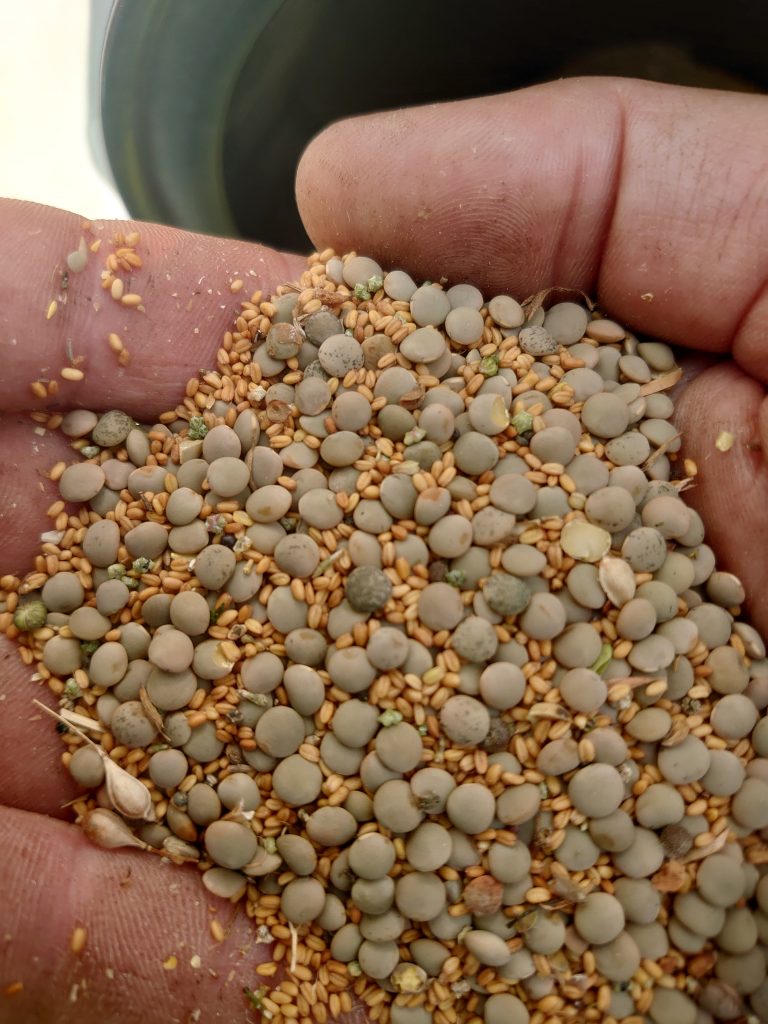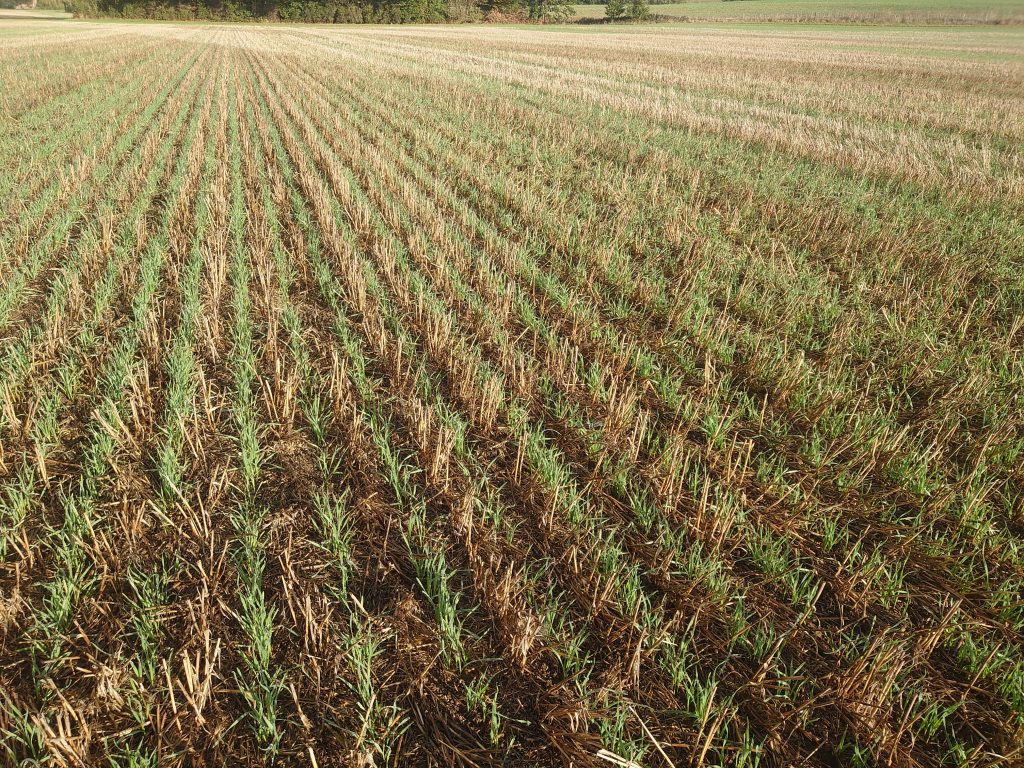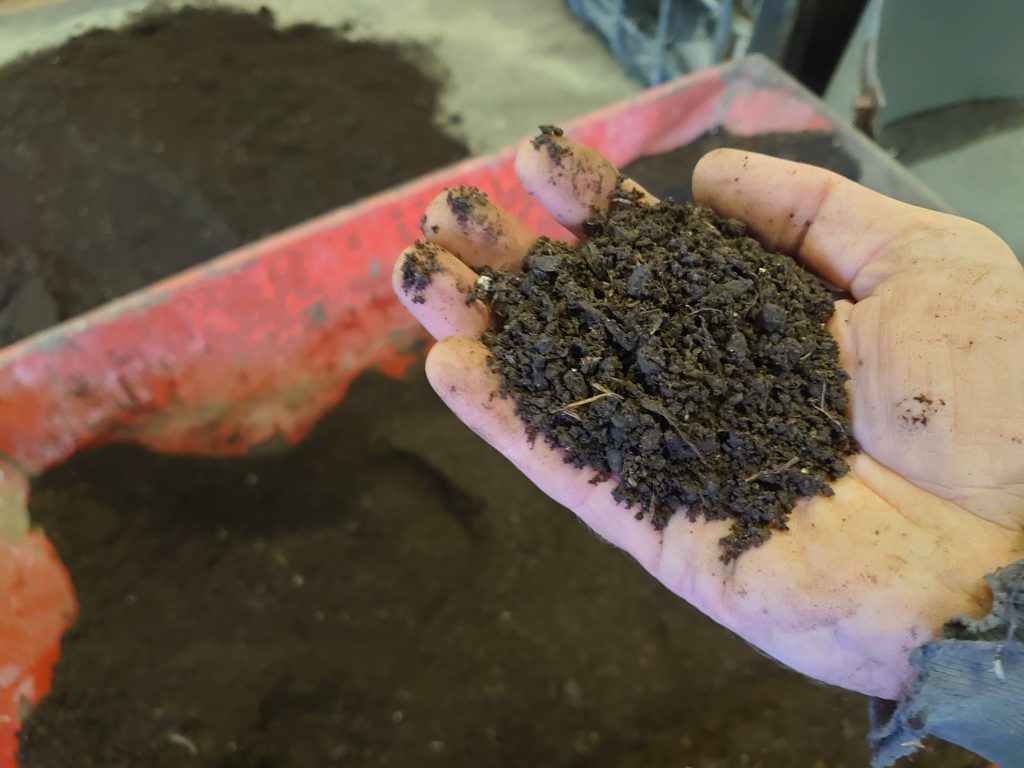January 2023
French Style Harvest
Since my last article in May harvest has been and gone (very quickly) and all the winter crops have been established and are looking well. This harvest it felt like we were farming in France. Most was done by the end of the first week in August and due to everything being so dry we couldn’t plant any grass seed or cover crops. I have always been jealous of the French farmers being able to take most of August off and enjoy the summer. I got a taste of it this year, for the first time in our relationship I spent the day with my other half on her birthday (I took the 11th of August off!!). I saw my children a lot and had days out with them during their summer holidays. It was great to have so much family time, maybe I need to start searching for farms in France or maybe climate change will make this a regular occurrence?
In my May article I talked a lot about the trials we had in the ground and I was going to go through the results in this article. With the talk of hot weather in the previous paragraph, this links in well to our experiment with growing Lentils and Camelina together (see picture). This seemed to be the only spring crop that coped with the 40 degree C temperatures and yielded well. We tried various seed rates of camelina and have come to the conclusion that the best thing will be to roll twice and add a few slug pellets when drilling in the future. The best establishment of Camelina was on the headland, which is always telling.

We had various trials in wheat. The first one was using Nurture 60 foliar to replace bagged Nitrogen. One area had 70/kg/ha/N bagged and then Nurture 60. The other had 140kg/ha/N and no Nurture 60. There was no noticeable difference in yield between the two. There was also no noticeable visual difference either as I did not tell anyone about this trial, and no one could pick it out as it all looked the same.

The second trial in wheat was comparing various foliar nitrogen treatments for lifting protein content. We had a control plot, AF nitrogen plot and a Nufol plot. The clear winner by a decent margin was Nufol. It increased our protein by 1.5% in this trial and has allowed our wheat to go for milling. Even though I grumbled at the exorbitant cost of it at the time it has had a great ROI this year.
The final trial in wheat this year was comparing our variety blend to a single variety (Crusoe). I had two trials in two separate fields. In the first the yield increase from the blend was 1.2t/ha and in the second field it was 0.6t/ha. This is a great result but does need some context. The trials were on light land and the variety was Crusoe which can in dry years struggle with the lack of water. Next year if the trials are on heavier ground and comparing to Extase for example and we get enough moisture, we may not see such dramatic results. Though, I was recently speaking at The Association of Applied Biologists conference and NIAB presented their trial results on variety blends, which showed very encouraging results as well. At the same conference I heard a researcher talk about coffee growing in Java. She talked about how the government in the 1990’s promoted and backed IPM and this led to a 90% reduction in pesticide usage. It is amazing what can happen if government, academia and farmers work together! DEFRA are you listening?
Finally, we did a small trial on spring linseed to look at whether adding compost extract down with the seed would have any effect. We did see 13% yield bump, which is encouraging, though it was only a small area in just one year. I know that Ben Taylor Davies had phenomenal results using extracts on potatoes. All this has encouraged me to widen our usage of extracts this year. All our wheat had compost extract, except for numerous control strips in fields. I still feel we have a lot to learn about using them, but early results are encouraging. (Picture of the compost extract in the vortex extractor is attached).
Before I finish, I wanted to talk about an observation from this autumn. We have drilled 2nd wheat into various situations this year, but one sticks out particularly. The wheat pictured is a second wheat where the crop 2 years ago was herbage seed. These crops are twice the size of other 2nd wheats that haven’t had grass in the rotation. This really highlights the long-term fertility benefits of having grass in your rotation.
My winter is partly going to be spent looking into new projects for the future and I am currently on the train to Edinburgh to investigate one such exciting development. I wish you all luck with your own new projects, Merry Christmas.


